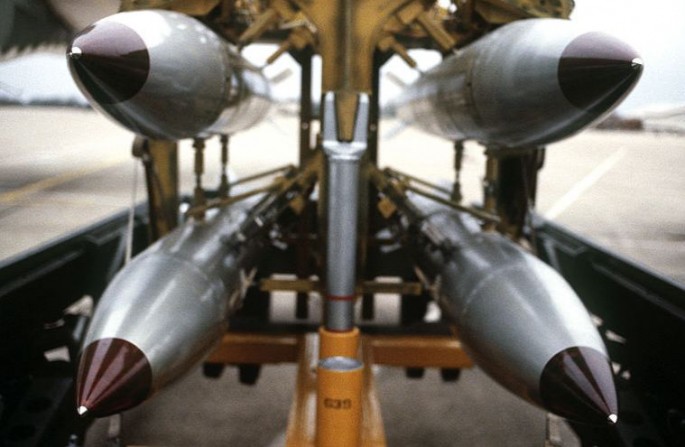The U.S. National Nuclear Security Administration (NNSA), the agency responsible for the military use of nuclear technology, has given the go ahead for the production of the upgraded B61-12 thermonuclear aircraft bomb.
NNSA said production of the first upgraded B61-12 nuclear bombs will begin in fiscal year 2020. Its decision authorizing the B61-12 warhead life-extension program (LEP) is the final development phase prior to actual production.
"Reaching this next phase of the B61-12 LEP is a major achievement for NNSA and the exceptionally talented scientists and engineers whose work underpins this vital national security mission," said NNSA head Lt. Gen. Frank Klotz.
"Currently, the B61 contains the oldest components in the US arsenal. This LEP will add at least an additional 20 years to the life of the system."
The authorization is another major step in the Obama administration's plan to modernize America's nuclear force, which could cost from $350 to $450 billion over the next decade. From 400 to 500 B61 Mod 12s are planned that will have a service life of 20 years.
NNSA's modernization plan, the "3+2 Strategy," will consolidate the U.S. arsenal of warheads into five variants. Five bomb and cruise missile warhead types are being combined into two replacement-warhead designs: the W80-4 and the B61-12.
The five ballistic missile warheads now in service are being consolidated into three new interoperable warheads: the IW-1, IW-2 and IW-3. The B61-12 will replace the existing B61-3, -4, -7, and -10 bomb designs.
The B61-12 has a circular error probability of 30 meters and carries a 50 kiloton warhead. Measuring 3.56 meters long, the bomb is designed to be launched by jets and bombers. Its casing can withstand supersonic flight speeds such as those achieved by the F-35 stealth fighter, the B-1B supersonic bomber and the B-2 stealth bomber.



























